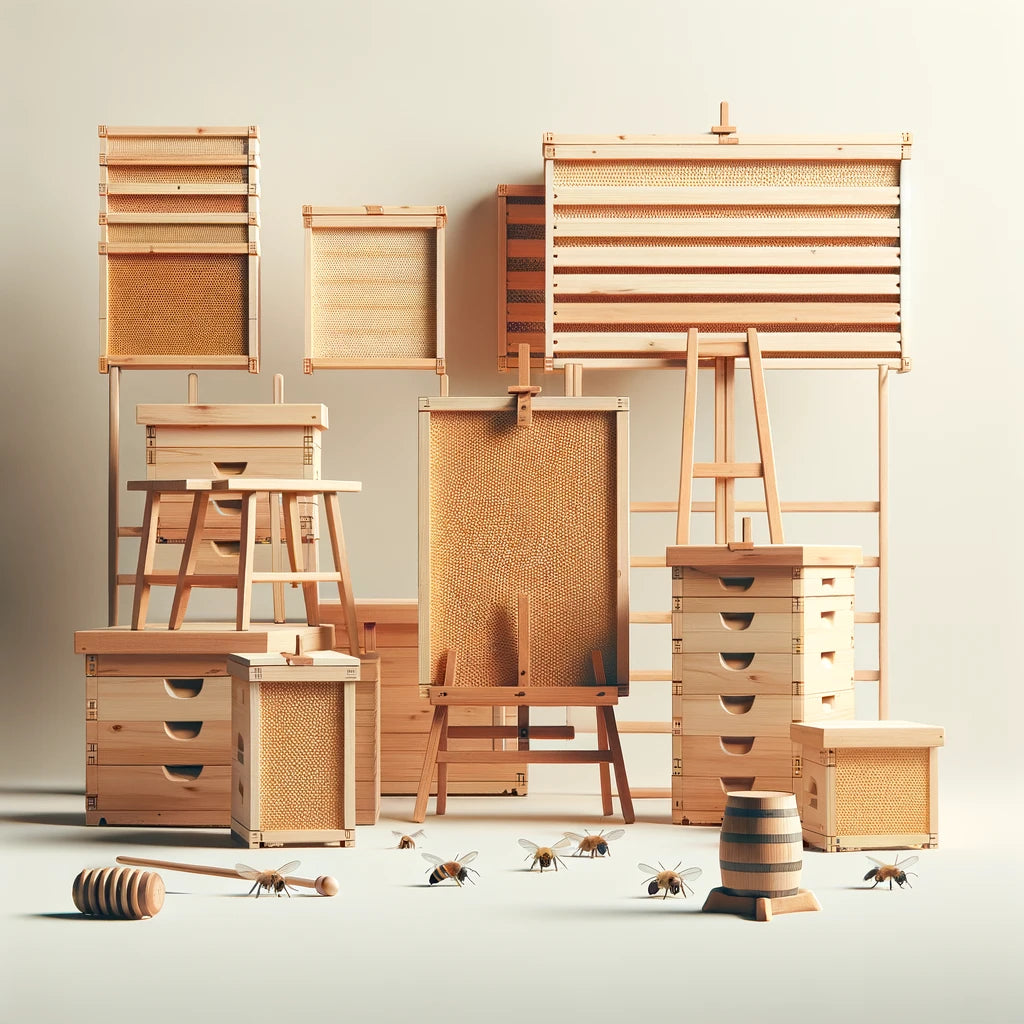
Beehive Frames: Types, Dimensions & Maintenance
Beehive frames are a crucial part of beekeeping, providing the structure for honey production and brood rearing. In this comprehensive guide, we will explore the different types of beehive frames, their dimensions, and essential maintenance practices. Whether you're a beginner or an experienced beekeeper, understanding the various aspects of beehive frames is vital for the success of your beekeeping venture.
Types of Beehive Frames
1. Langstroth Frames
- The most commonly used frames in beekeeping.
- Available in three standard sizes: deep, medium, and shallow.
- Deep frames are used for brood chambers, while medium and shallow frames are used for honey supers.
2. Flow Frames
- A modern innovation designed for easy honey extraction without disturbing the bees.
- Honey is extracted by turning a handle, causing the cells to split and drain into a collection trough.
3. Foundationless Frames
- Do not contain a preformed beeswax foundation, allowing bees to build natural comb within the frame.
- Preferred by some beekeepers for its natural approach and cost-effectiveness.
4. Plastic Frames
- Durable and easy to clean, often used in commercial beekeeping operations due to their longevity and resistance to wax moths.
Beehive Frame Dimensions
The dimensions of beehive frames vary depending on the size of the beehive box in which they are used. For Langstroth hives, the standard frame heights are as follows:
Deep: 9 1/8 inches
Medium: 6 1/4 inches
Shallow: 5 3/8 inche
Maintenance of Beehive Frames
Proper maintenance of beehive frames is essential for the health of the bee colony and the quality of the honey. Here are some key maintenance practices:
1. Regular Inspection - Inspect the frames for signs of damage, mold, or pests. Replace any damaged frames promptly.2. Cleaning - Clean the frames after each honey harvest to remove residual wax and propolis using a hive tool and a wire brush.
3. Waxing - Periodically wax the frames to encourage the bees to draw out comb by applying a thin layer of beeswax to the frame.
4. Storage - Store unused frames in a dry, well-ventilated area to prevent mold and wax moth infestations.
Assembled and Unassembled Beehive Frames
Beehive frames are available in both assembled and unassembled forms, offering flexibility to beekeepers.
- Ready to be placed directly into the beehive, saving time and effort for beekeepers.Check out our collection of Assembled Bee Frames for high-quality options.
- Unassembled Beehive FramesRequire the beekeeper to put them together, allowing for customization and cost-effectiveness.Explore our range of Unassembled Beehive Frames for customizable solutions.
Additional Resources
1. Assembled Plastic Foundation for Bee Frames
Check out our collection of Assembled Plastic Foundation for Bee Frames for high-quality options.
2. Beekeeping Forum
For more information and discussions on beehive sizes and dimensions, check out this Beekeeping Forum.
This list of beehive sizes and dimensions provides detailed information on various types of beehives.
4. Full Bee Plastic Frames
Check out our collection of Full Bee Plastic Frames for durable and long-lasting options.
5. Frames Collection
For more information and to explore our wide range of beehive frames, visit our Frames Collection.
6. 8 Frame Beehive Plans
For those interested in building their own beehive, check out these 8 Frame Beehive Plans for step-by-step instructions.
7. Beehive Frame Jig
Make the process of assembling beehive frames easier with this Beehive Frame Jig tutorial.
By utilizing these resources and understanding the different types and dimensions of beehive frames, as well as their maintenance requirements, beekeepers can ensure the health and productivity of their bee colonies.
General Questons About Beehive Frames
1. How often should beehive frames be inspected and maintained?
Beehive frames should be regularly inspected for damage, mold, or pests. Ideally, inspections should be done during each hive check, which can be weekly during active seasons.
2. What are the benefits of using foundationless frames?
Foundationless frames allow bees to build natural comb, which can be more cost-effective for beekeepers. They are preferred by those who favor a natural approach, as they let bees create comb that is tailored to their needs.
3. What is the difference between assembled and unassembled beehive frames?
- Assembled Beehive Frames: Ready to be placed directly into the hive, saving time and effort for beekeepers. They are convenient and can be used immediately.
- Unassembled Beehive Frames: Require assembly by the beekeeper, which allows for customization and can be more cost-effective. They offer flexibility for beekeepers to adjust the frames according to their preferences.



Leave a comment